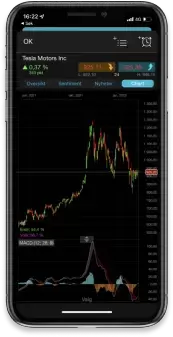After such a positive start to the year, with two successive monthly gains, European markets have performed remarkably well against a backdrop of a sharp rise in interest rates. US markets on the other hand closed lower as well as giving up some of their January gains.
Year to date we’ve seen the DAX rise 10.3% and the FTSE100 add 5.7%, against a backdrop that has seen German and UK rates surge against a backdrop of stickier than expected inflationary pressure.
These gains have inevitably prompted speculation as to how sustainable they are, and for now the progress we’ve seen thus far does look steady and sustainable. Much will depend on how high rates eventually settle and in that there are many strands of opinion.
Markets are continuing to price in the prospect that rates will eventually fall back to a lower baseline, with very few investors willing to countenance the idea that rates are likely to remain high for some time to come, and even longer.
Much will depend on high sticky inflation is likely to be, and on current evidence there is little sign that it is slowing, which means we could see at least 2-3 more rate hikes in the coming months, and rates could stay at these levels through 2024 and into 2025.
Today’s final manufacturing PMIs from Spain, Italy, France, Germany and the UK are set to point to a mixed outlook when it comes to economic activity, with manufacturing expected to show an improvement to 49 and 51 in Spain and Italy and declines to 47.5 and 46.3 in France and Germany respectively.
Yesterday inflation in France hit a record high of 7.2% in February, driven by increases in food and services prices, while in Spain it edged back up to 6.1%. While we’ve seen slowdowns in the price of energy which generally tends to help the manufacturing sector, there has been divergent reactions to the milder winter. Italy and Spain appear to be more resilient, however France and Germany appear to be heading in the wrong direction.
One part of that is higher inflation, with today’s German CPI for February expected to only decline modestly to 9%, from 9.2%, however there is a risk of an upside surprise given yesterday’s readings from Spain and France. The sticky inflation outlook is already shifting rate hike expectations for the ECB, and a possible 4% pause rate.
We also have more economic data from the UK, where consumers are being similarly squeezed by higher prices and some shortages. UK manufacturing PMI is expected to be confirmed at 49.2, an increase from 47.
Mortgage approvals have also been in decline in the face of the slowing economy and falling house prices. At the end of last year approvals fell to their lowest levels since May 2020 at 35.6k and could see a modest pickup in January to 38.5k, however it is clear that higher rates are weighing on demand for mortgages, as well as property.
Net consumer credit has slowed from the levels we were seeing in the summer, falling to £500m at the end of last year. This could see a modest pickup to £800m in January.
Moving on to the US economy, we have ISM manufacturing which will tee us up nicely for the services report on Friday, which helped reinforce the hawkish tilt that we saw post January payrolls.
Manufacturing ISM is forecast to improve modestly to 48, still in contraction, along with prices paid which is currently disinflationary at 44.5.
European markets look set to start the new month higher after Asia markets got a lift from the latest China manufacturing and services PMI numbers for February, which showed that manufacturing activity jumped to its highest level since 2012 at 52.6. Services also improved to 56.3, giving the China reopening story some added legs, after what has been a slow start since restrictions started to get eased back in December.
EUR/USD – looks to have posted a bullish day reversal off support at the 1.0530 area earlier this week. We need to push through the 1.0640 area to open up a move higher, and back towards the 50-day SMA at 1.0730. While below 1.0730, the bias remains for a test of the January lows at 1.0480/85.
GBP/USD – retested the 50-day SMA at 1.2150 yesterday, and which needs to break to retarget the 1.2300 area. Support remains at the lows this week at the 200-day SMA at 1.1920/30. A break of 1.1900 retargets the 1.1830 area.
EUR/GBP – slipped back from the 0.8830/40 area and has drifted down to the 100-day SMA at 0.8750. While below the 0.8830 we could see further declines towards the 0.8720 level.
USD/JPY – ran into resistance at the 200-day SMA at 136.90/00. Interim support at 133.60, and below that at 132.60, and 50-day SMA.
Disclaimer: CMC Markets is an execution-only service provider. The material (whether or not it states any opinions) is for general information purposes only, and does not take into account your personal circumstances or objectives. Nothing in this material is (or should be considered to be) financial, investment or other advice on which reliance should be placed. No opinion given in the material constitutes a recommendation by CMC Markets or the author that any particular investment, security, transaction or investment strategy is suitable for any specific person. The material has not been prepared in accordance with legal requirements designed to promote the independence of investment research. Although we are not specifically prevented from dealing before providing this material, we do not seek to take advantage of the material prior to its dissemination.







